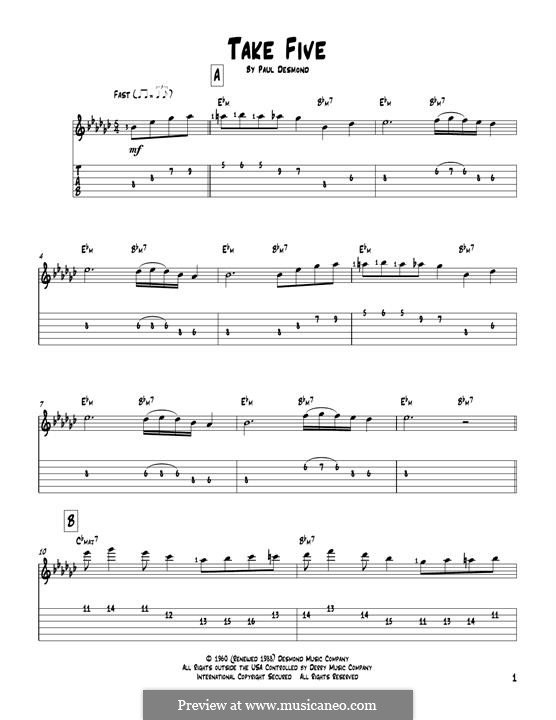


Obviously with each band, every component is just as important as the next however, there is no denying that the riff played by the song’s composer and saxophonist, Paul Desmond, is the melody which makes the song the catchy classic it is. The song is known all around the globe due to it’s appearance in television, film and general listening. This experimental change in style lead to his album ‘Time Out’ becoming the first ever jazz album to sell over one million copies whilst also landing ‘Take Five’a place in the Grammy hall of fame. Led of course, by Dave Brubeck himself, a young and talented pianist who was often regarded by the jazz community as one of the most prominent exporters of ‘Cool Jazz’, at the time, a new and lively type of jazz which was swatting away the bores of traditional 4/4 style. Originating in California in 1951, the Dave Brubeck Quartet were a jazz group setting the standard by many means. ‘Take Five’ went on to be the best-selling jazz single of all time but this was something that Brubeck and his quartet of Paul Desmond (Sax), Eugene Wright (Bass) and Joe Morello (Drums), never anticipated. The quirky and energetic jazz number is world famous and has been dubbed as one of the greatly important and popular jazz records to have ever existed. A scene filled the rafters with cosmopolitan commuters and dwellers, enjoying the buzz of the city life, then it would be hard to imagine this scene having any other backing track than Dave Brubeck’s ‘Take Five’. Josh Jones is a writer and musician based in Durham, NC.If you were to imagine a cafe somewhere in say, Paris or New York, a scene with bustle, coffee and energy. Remembering Jazz Legend Dave Brubeck (RIP) with a Very Touching Musical Moment Pakistani Musicians Play an Enchanting Version of Dave Brubeck’s Jazz Classic, “Take Five” How Dave Brubeck’s Time Out Changed Jazz Music Above, see them in one of their absolute greatest performances, a rollicking, dynamic attack in Belgium in 1964 that serves as all the argument one needs for “Take Five”’s greatness. No matter how many times you’ve heard Desmond’s Eastern-inspired melodies over Brubeck’s two-chord blues vamp and Morello’s relentless fills, you can always hear it afresh when the classic quartet plays the song live. good will, Brubeck and his bandmates also picked up the Eurasian folk music that inspired “Take Five,” with its 5/4 time (which in turn inspired the name).

While traveling to ostensibly promote U.S. State Department tour of Europe and Asia. After cycling through several rhythm players throughout the early fifties, they found drummer Joe Morello in 1956, then two years later, bassist Eugene Wright, who first joined them for a U.S. Over time “Take Five” may have “lost much of its capacity to surprise,” but “it can still delight.” That is no more so the case when we hear as it was originally played by the Dave Brubeck quartet itself, formed in 1951 by Brubeck and Desmond, who first met in Northern California in 1944. Al Jarreau adapted this version for a 1977 recording on his Grammy-winning album Look to the Rainbow, which “introduced a new generation of fans to this song. In 1961, Brubeck and his wife Iola penned lyrics for a version recorded by Carmen McRae. The original tune, composed not by Brubeck but longtime saxophonist Paul Desmond, was adapted into more popular forms almost as soon as it came out.


 0 kommentar(er)
0 kommentar(er)
